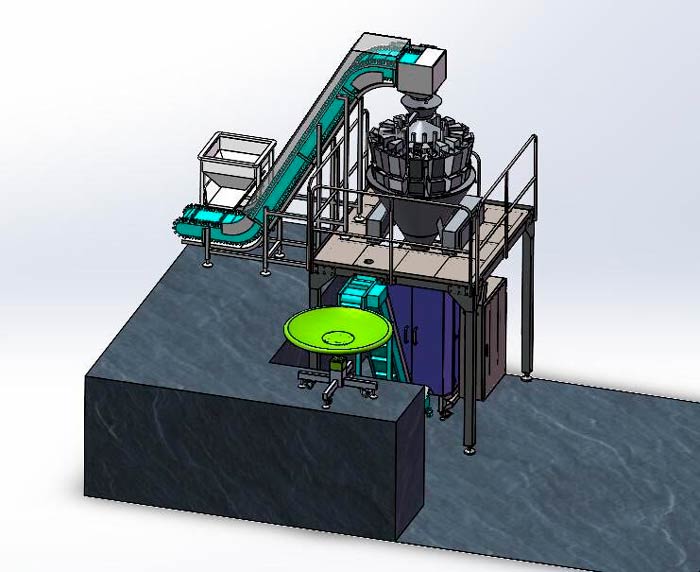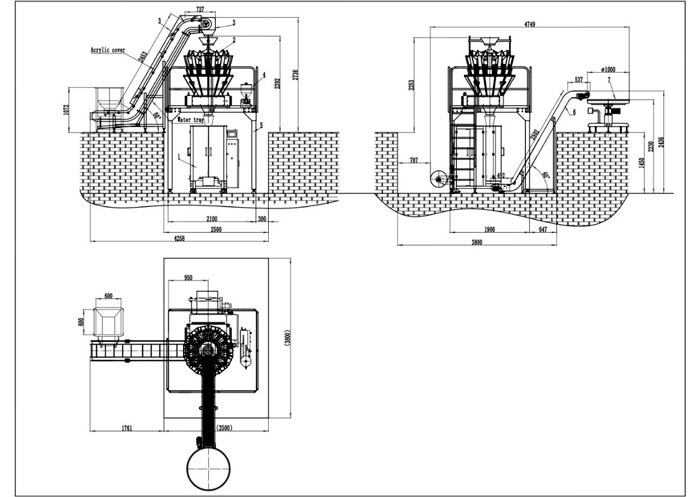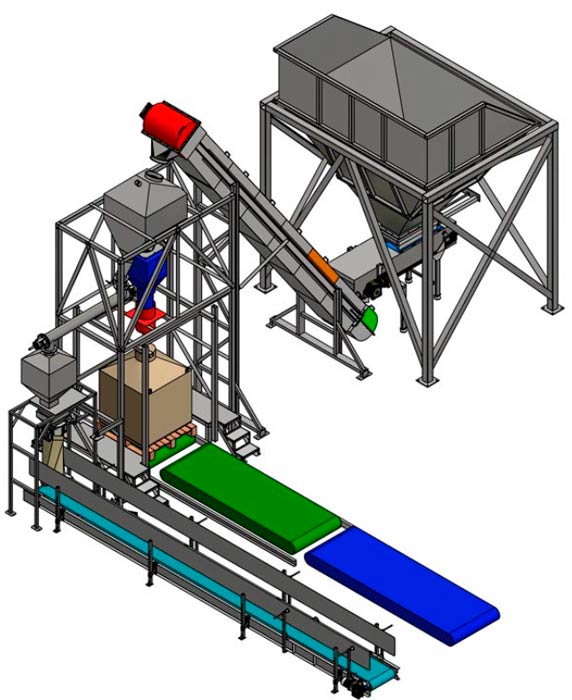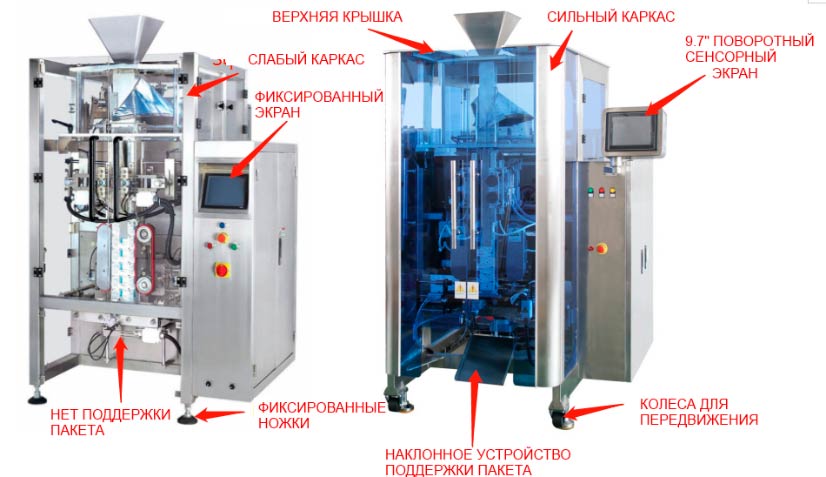- 1. Key parameters for choosing equipment
- 2. Why do you need Technical Specifications.
- 3. How the location can influence the selection of equipment.
- 4. Choice of manufacturer: Ukrainian or foreign
- 4.1. Quality.
- 4.2. Availability of spare parts
- 5. Ease of operation of equipment.
You have decided to purchase packaging equipment - this is logical and correct. The fact that packaging and packing is a very profitable business is no secret. It no longer surprises anyone that you can earn more on packaging than on the production of the product it contains.
However, as experience shows, not everyone knows that if the packaging machine is loaded less than 30-50%, then it is unlikely to pay for itself so we recommend starting the choice by determining the economic feasibility of purchasing such equipment, i.e. from the calculation of the feasibility study (feasibility study). Feasibility study is a topic for another discussion. Now we will talk about what you need to pay attention to in order to choose exactly what you really need. Mistakes in the selection of packaging equipment are costly and the consequences of these mistakes often have to be borne for years. In order for the machine to work fully, you need to know how much electricity this complex will consume, possibly compressed air, and possibly water for cooling the systems. It would also be useful to know how much space this line will take up and how many people are needed to operate it.
What are the key parameters necessary for choosing equipment? Let's start with the fact that you need to decide in what container you are going to pack your product. For example, you need to pack coffee. It can be packaged in bags such as “pillow”, “gasset”, “stabilo”, “doy-pack”, “sachet”, in jars, in a ready-made open bag, etc. Each type of packaging usually requires completely different equipment. As a rule, this means that there are certain types of machines that can pack more than just one type of packaging. In different organizations, the choice of packaging type lies with different departments, but usually marketers determine that the demand for a product will be maximum if it is packaged in such and such types of packages with such and such a dose.
The next universal point is productivity. Universal means that you need to decide on it before purchasing packaging equipment of any kind. Cereals, for example, can be packaged in pre-purchased ready-made bags using the simplest dispenser, followed by sealing the bag. You can do this on a semi-automatic machine, which will even make you a bag into which you will dose your cereal. It can be an automatic machine with one, two, three or even four-line feeder or multi-head feeder. This can be a whole packaging complex, which includes a lot of auxiliary equipment, such as a checkweigher, metal detector, etc. The complex can end with a palletizer (the so-called belling), which makes bags, groups the bags in them in a given order, compacts them and seals the bag . It can be followed by a manipulator, which automatically places the bags on pallets, which are usually wrapped with pallet film. The first option costs tens of thousands of hryvnia, the last several hundred thousand dollars. So it is impossible to give an approximate price, as the client sometimes asks. Strange as it may seem, our experience shows that many clients begin to select equipment without knowing what kind of performance they need. Request: reset all options, it makes no sense. If a manager throws a book of suggestions at a client, then this will definitely confuse him rather than bring clarity. I, in turn, am sure that if a buyer goes to the store, then no matter how difficult it is, he himself must decide what is best for him: a scooter, a moped, a passenger car, a dump truck or a truck.
The following indicators are the dose size, if we are talking, for example, about packaging and package size, if we are talking about piece or group packaging. For example, if you need to pack granular fertilizers, then a pillow bag is suitable for packing one kilogram, but if you pack the same fertilizer in a ready-made open 50 kg bag, you need completely different equipment, the same applies to packing one ton in a big bag.
If you need to package a piece product for example, a chocolate bar, soap or a valve, then it’s not about the dose, but about the size and shape. It is better to pack soap on a flow pack machine with top film feed, but for the valve you will have to use a similar machine with bottom feed. About the same when it comes to group packaging. If you need to pack a group of bottles or boxes in shrink polyethylene film, then you need to know the pack size or size range. Sometimes weight needs to be taken into account. For example, on a standard machine you are unlikely to be able to pack batteries weighing more than 30 kg.
If you want to purchase a thermoformer or traceiler, then you need to know both the size and the dosage. Let's say you need to package yoghurts. The packaging dimensions are needed to determine the size of the matrices, and the dose is needed to select a dispenser.
To avoid trouble when ordering equipment, the most correct thing is to draw up technical specifications and include everything in it. In fact, this is the responsibility of the client, since no one knows better than him what exactly he wants. But, as experience has shown, not many clients think that this goes without saying. For many this is a difficult task. I have heard more than once: all people are like people, and for some reason you need some kind of technical specifications. Therefore, bearing in mind the serious consequences that the absence of technical specifications can lead to, we have compiled questionnaires for each type of equipment; after receiving the client’s request, we try to fill them out ourselves and only ask the client to read the questionnaires, if necessary, add photos, videos and other necessary information and confirm it in writing. When it comes to a contract, this information in the form of technical specifications comes as an appendix to it.
Factors that are not among the key ones often become important. For example, if the room you have chosen is not high enough to accommodate a packaging machine. We had to solve such problems as well. Here's an example: people did not have a high enough room to accommodate a complex for packing cottage cheese, and they decided to put the packaging machine in a pit. I won’t say that we really liked this idea, but people did not find another way out and we helped them.


There was also a solution where the product had to be loaded into the packaging complex in one room and packaged in another. To do this, the feeding conveyor passed through a specially made hole in the wall.

There are also other factors, such as operating the machine in an explosive environment or with an explosive product.
Here's another important aspect. You may hear: I am only interested in Ukrainian. Spare parts, service, response speed, etc. No less often, you can also hear: I just don’t want Ukrainian – I’ve had enough, that’s enough. We must admit with satisfaction that there are already quite high-quality and inexpensive options for Ukrainian equipment, but the list, unfortunately, is still very limited.
Now, when it comes to serious equipment, the Ukrainian consumer of packaging equipment usually faces a dilemma: Europe or Asia. Others come across extremely rarely. Europe is associated with very high quality, but also with very high prices. And this is, in principle, true, but I urge you not to treat such a statement as an axiom. I personally knew an Italian manufacturer of vacuum packaging machines, which offered us to sell its “disposable stampings” in Ukraine at a lower price than their European counterparts. We didn’t fall for it, but our partners did and very soon regretted it when the machines, one after another, began to break down beyond repair.
Asia, which is mostly China, is associated with low prices, but also low quality, and sometimes even fraud. The mission of our enterprise, for example, is not just the sale of packaging equipment of our production, but the solution of packaging problems that arise from our clients and the completion of these solutions with equipment, regardless of whose production. The main thing is that, firstly, the technical characteristics are best suited for solving the problem, and secondly, it has the highest quality at the lowest possible price. And in terms of the last factor, alas, no one can surpass China. Here, however, there are also exceptions. For example, a Chinese thermoformer is comparable in price to a European one, but China is far away and, based on our stereotypes, European quality is still preferable.
Now about the quality of equipment from foreign manufacturers. Our company has developed a system for checking the feasibility of working with a particular manufacturer. Let's voice the first couple of points. 1. We start working with a new supplier if he has already supplied to Ukraine and the buyer’s representative is satisfied, can organize a tour of his enterprise for us, or at least give comprehensive answers to our questions about the operation of this equipment. 2. Our eminent (well-known in the packaging environment) foreign colleague supplies equipment from this manufacturer to his country on an ongoing basis. In general, the work of selecting and checking a supplier is a huge task, reminiscent of an iceberg. The client does not see the main part of it and, as a rule, underestimates it. People, sometimes, wanting to save money, import equipment from China themselves, buying from a supplier they don’t really know, and ask us to help launch it. And we, having assessed this equipment by its quality, do not always undertake this. In principle, our system of selection and verification of suppliers gives good results.
Now let's take a closer look at the spare parts that have already been mentioned here. The efficiency of their delivery depends more on the supplier’s policy than on where the equipment is manufactured. Firstly, Ukrainian manufacturers are actively equipping their cars with Chinese components. Secondly, if a spare part is produced in Ukraine, this does not mean that you do not need to wait until it is manufactured. A responsible supplier simply freezes some funds and keeps a selection of wear-and-tear parts in stock. This also does not provide an absolute guarantee, because... Sometimes parts not on the wear-out list fail. It so happened that with the beginning of the war we began to professionally deal with spare parts. We have a spare parts warehouse. Of course, it does not yet 100% cover the needs of customers, but we are constantly expanding our stock and range. As one of the effective measures, we try to equip the equipment we sell with spare parts. Well, in emergency cases, we use high-speed delivery services.
And one more thing I want to draw attention to is its ease of use. Rarely does anyone think about this aspect, but in vain. Take, for example, the operation of sewing a bag with a manual bag sewing machine. It weighs two and a half kilograms and it is quite difficult for an operator to work a shift using it. But it is possible to install a balanced suspension, that is, for the operator it will be almost weightless. Even such a small thing as the size of the display and the ability to turn it towards the operator, saves him from having to do the entire shift one step to the side, a step back, a step to the side, a step back... If the machine is not configured for a specific living person, then fatigue accumulates unnoticed, but inexorably.
Below is a small comparison of simpler machines and some life hacks that help a lot, but, like everything, they cost money. For example, wheels under the machine that lock when the machine is installed in place. A sheet under the dispenser that prevents pieces of product from getting into the machine's mechanisms. And many many others.


